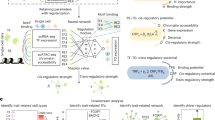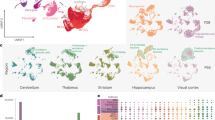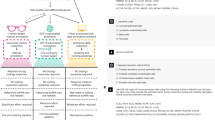Abstract
Although messenger RNAs are key molecules for understanding life, until now, no method has existed to determine the full-length sequence of endogenous mRNAs including their poly(A) tails. Moreover, although non-A nucleotides can be incorporated in poly(A) tails, there also exists no method to accurately sequence them. Here, we present full-length poly(A) and mRNA sequencing (FLAM-seq), a rapid and simple method for high-quality sequencing of entire mRNAs. We report a complementary DNA library preparation method coupled to single-molecule sequencing to perform FLAM-seq. Using human cell lines, brain organoids and Caenorhabditis elegans we show that FLAM-seq delivers high-quality full-length mRNA sequences for thousands of different genes per sample. We find that 3′ untranslated region length is correlated with poly(A) tail length, that alternative polyadenylation sites and alternative promoters for the same gene are linked to different tail lengths, and that tails contain a substantial number of cytosines.
This is a preview of subscription content, access via your institution
Access options
Access Nature and 54 other Nature Portfolio journals
Get Nature+, our best-value online-access subscription
$29.99 / 30 days
cancel any time
Subscribe to this journal
Receive 12 print issues and online access
$259.00 per year
only $21.58 per issue
Buy this article
- Purchase on Springer Link
- Instant access to full article PDF
Prices may be subject to local taxes which are calculated during checkout





Similar content being viewed by others
Code availability
The software used for data analysis is available at https://github.com/rajewsky-lab/FLAMAnalysis.
References
Nicholson, A. L. & Pasquinelli, A. E. Tales of detailed poly(A) tails. Trends Cell Biol. 29, 191–200 (2019).
Jalkanen, A. L., Coleman, S. J. & Wilusz, J. Determinants and implications of mRNA poly(A) tail size–does this protein make my tail look big? Semin. Cell Dev. Biol. 34, 24–32 (2014).
Eckmann, C. R., Rammelt, C. & Wahle, E. Control of poly(A) tail length. Wiley Inter. Rev. RNA 2, 348–361 (2011).
Brown, C. E. & Sachs, A. B. Poly(A) tail length control in Saccharomyces cerevisiae occurs by message-specific deadenylation. Mol. Cell Biol. 18, 6548–6559 (1998).
Yamashita, A. et al. Concerted action of poly(A) nucleases and decapping enzyme in mammalian mRNA turnover. Nat. Struct. Mol. Biol. 12, 1054–1063 (2005).
Meyer, S., Temme, C. & Wahle, E. Messenger RNA turnover in eukaryotes: pathways and enzymes. Crit. Rev. Biochem Mol. Biol. 39, 197–216 (2004).
Chen, C. Y. & Shyu, A. B. Mechanisms of deadenylation-dependent decay. Wiley Interdiscip. Rev. RNA 2, 167–183 (2011).
Subtelny, A. O., Eichhorn, S. W., Chen, G. R., Sive, H. & Bartel, D. P. Poly(A)-tail profiling reveals an embryonic switch in translational control. Nature 508, 66–71 (2014).
Chang, H., Lim, J., Ha, M. & Kim, V. N. TAIL-seq: genome-wide determination of poly(A) tail length and 3′ end modifications. Mol. Cell. 53, 1044–1052 (2014).
Lim, J. et al. Uridylation by TUT4 and TUT7 marks mRNA for degradation. Cell 159, 1365–1376 (2014).
Morgan, M. et al. mRNA 3′ uridylation and poly(A) tail length sculpt the mammalian maternal transcriptome. Nature 548, 347–351 (2017).
Lim, J. et al. Mixed tailing by TENT4A and TENT4B shields mRNA from rapid deadenylation. Science 361, 701–704 (2018).
Chang, H. et al. Terminal uridylyltransferases execute programmed clearance of maternal transcriptome in vertebrate embryos. Mol. Cell. 70, 72–82 (2018).
Lima, S. A. et al. Short poly(A) tails are a conserved feature of highly expressed genes. Nat. Struct. Mol. Biol. 24, 1057–1063 (2017).
Lim, J., Lee, M., Son, A., Chang, H. & Kim, V. N. mTAIL-seq reveals dynamic poly(A) tail regulation in oocyte-to-embryo development. Genes Dev. 30, 1671–1682 (2016).
Eichhorn, S. W. et al. mRNA poly(A)-tail changes specified by deadenylation broadly reshape translation in Drosophila oocytes and early embryos. eLife 5, e16955 (2016).
Cramer, P., Pesce, C. G., Baralle, F. E. & Kornblihtt, A. R. Functional association between promoter structure and transcript alternative splicing. Proc. Natl Acad. Sci. USA 94, 11456–11460 (1997).
Fededa, J. P. et al. A polar mechanism coordinates different regions of alternative splicing within a single gene. Mol. Cell 19, 393–404 (2005).
Tilgner, H. et al. Microfluidic isoform sequencing shows widespread splicing coordination in the human transcriptome. Genome Res. 28, 231–242 (2018).
Kapteyn, J., He, R., McDowell, E. T. & Gang, D. R. Incorporation of non-natural nucleotides into template-switching oligonucleotides reduces background and improves cDNA synthesis from very small RNA samples. BMC Genom. 2, 413 (2010).
Lizio, M. et al. FANTOM consortium. gateways to the FANTOM5 promoter level mammalian expression atlas. Genome Biol. 5, 16–22 (2015).
Saito, T. L. et al. The transcription start site landscape of C. elegans. Genome Res. 23, 1348–1361 (2013).
Sharon, D., Tilgner, H., Grubert, F. & Snyder, M. A single-molecule long-read survey of the human transcriptome. Nat. Biotechnol. 31, 1009–1014 (2013).
Au, K. F. et al. Characterization of the human ESC transcriptome by hybrid sequencing. Proc. Natl Acad. Sci. USA 110, E4821–E4830 (2013).
Temperley, R. J., Wydro, M., Lightowlers, R. N. & Chrzanowska-Lightowlers, Z. M. Human mitochondrial mRNAs–like members of all families, similar but different. Biochim Biophys. Acta 1797, 1081–1085 (2010).
Bazzini, A. A., Lee, M. T. & Giraldez, A. J. Ribosome profiling shows that miR-430 reduces translation before causing mRNA decay in zebrafish. Science 336, 233–237 (2012).
Liu, Y. et al. Multi-omic measurements of heterogeneity in HeLa cells across laboratories. Nat. Biotechnol. 37, 314–322 (2019).
Tani, H. et al. Genome-wide determination of RNA stability reveals hundreds of short-lived noncoding transcripts in mammals. Genome Res. 22, 947–956 (2012).
Oktaba, K. et al. ELAV links paused Pol II to alternative polyadenylation in the Drosophila nervous system. Mol. Cell 22, 341–348 (2015).
Wahle, E. Purification and characterization of a mammalian polyadenylate polymerase involved in the 3′ end processing of messenger RNA precursors. J. Biol. Chem. 266, 3131–3139 (1991).
Workman R., et al. Nanopore native RNA sequencing of a human poly(A) transcriptome. Preprint available at bioRxiv https://doi.org/10.1101/459529 (2010).
Lancaster, M. A. & Knoblich, J. A. Generation of cerebral organoids from human pluripotent stem cells. Nat. Protoc. 9, 2329–2340 (2014).
Dobin, A. et al. STAR: ultrafast universal RNA-seq aligner. Bioinformatics 29, 15–21 (2012).
Liao, Y., Smyth, G. K. & Shi, W. featureCounts: an efficient general purpose program for assigning sequence reads to genomic features. Bioinformatics 30, 923–9230 (2014).
Dodt, M., Roehr, J. T., Ahmed, R. & Dieterich, C. FLEXBAR-Flexible barcode and adapter processing for next-generation sequencing platforms. Biology 14, 895–905 (2012).
Allen, M. A., Hillier, L. W., Waterston, R. H. & Blumenthal, T. A global analysis of C. elegans trans-splicing. Genome Res. 21, 255–264 (2011).
Quinlan, A. R. & Hall, I. M. BEDTools: a flexible suite of utilities for comparing genomic features. Bioinformatics 26, 841–842 (2010).
Hahne, F. & Ivanek, R. in Statistical Genomics: Methods and Protocols (eds Mathé, E. & Davis, S.) 335–351 (Springer, 2016).
Acknowledgements
We thank A. Rybak-Wolf for providing iPS cells and cerebral organoids samples, J. Froehlich for providing C. elegans samples, A. Boltengagen for cell culture, C. Quedenau, D. Yumi Sunaga-Franze and S. Sauer of the BIMSB Genomics platform for adapter ligation, sequencing runs and preprocessing of sequencing data, H. Lickert for providing the XMO01 iPS cell line and S. Formichetti from the laboratory of G. Macino for providing HeLa S3 cells. We also thank all the members of the N. Rajewsky laboratory for critical and useful discussions. I.L. is recipient of an EMBO Long Term Fellowship (no. ALTF 1235-2016). J.A. is member of the MDC–NYU exchange PhD program. N.K. was supported by the DFG Leibniz prize (N.R.) and grants DFG RA 838/8-2, HGF ExNet-0036 and DFG KA 5006/1-1.
Author information
Authors and Affiliations
Contributions
I.L., S.A. and J.A. conceived and optimized FLAM-seq. I.L., S.A. and J.A. performed all the experiments. J.A. and N.K. conceived and implemented the FLAM-seq analysis pipeline. J.A., N.K. and I.L. performed the computational analyses. N.R. contributed to both experimental and analyses design and supervised the whole project.
Corresponding author
Ethics declarations
Competing interests
I.L., J.A., N.K., S.A. and N.R. are named inventors on a patent application directed to genome-wide full-length mRNA and poly(A) tail sequencing. European Patent application EP18198248 has been filed with priority of October 2018.
Additional information
Peer review information: Lei Tang was the primary editor on this article and managed its editorial process and peer review in collaboration with the rest of the editorial team.
Publisher’s note: Springer Nature remains neutral with regard to jurisdictional claims in published maps and institutional affiliations.
Supplementary information
Supplementary Information
Supplementary Notes 1 and 2 and Supplementary Figs. 1–5.
Supplementary Protocol
Supplementary protocol for Full-length poly(A) and mRNA sequencing (FLAM-seq).
Rights and permissions
About this article
Cite this article
Legnini, I., Alles, J., Karaiskos, N. et al. FLAM-seq: full-length mRNA sequencing reveals principles of poly(A) tail length control. Nat Methods 16, 879–886 (2019). https://doi.org/10.1038/s41592-019-0503-y
Received:
Accepted:
Published:
Issue Date:
DOI: https://doi.org/10.1038/s41592-019-0503-y
This article is cited by
-
Rational design of an artificial tethered enzyme for non-templated post-transcriptional mRNA polyadenylation by the second generation of the C3P3 system
Scientific Reports (2024)
-
Deadenylation kinetics of mixed poly(A) tails at single-nucleotide resolution
Nature Structural & Molecular Biology (2024)
-
LAST-seq: single-cell RNA sequencing by direct amplification of single-stranded RNA without prior reverse transcription and second-strand synthesis
Genome Biology (2023)
-
Nano3P-seq: transcriptome-wide analysis of gene expression and tail dynamics using end-capture nanopore cDNA sequencing
Nature Methods (2023)
-
Remodeling of maternal mRNA through poly(A) tail orchestrates human oocyte-to-embryo transition
Nature Structural & Molecular Biology (2023)



